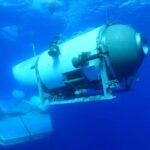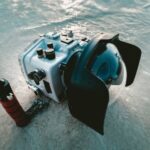Saving Ocean Plastic Wildlife: Join The Movement Now!
The Impact of Ocean Plastic Wildlife: A Blogger’s Perspective
When it comes to environmental issues, one that has been gaining increasing attention is the problem of ocean plastic wildlife. As a passionate advocate for sustainability, I have always been intrigued by the devastating effects of plastic pollution on marine life. In this article, I will delve into the what, who, when, where, why, and how of ocean plastic wildlife, providing an informative and thought-provoking analysis.
What is Ocean Plastic Wildlife?
Ocean plastic wildlife refers to the detrimental impact of plastic waste on marine ecosystems and its inhabitants. As our oceans become increasingly polluted, marine animals and plants suffer immensely. From entanglement in discarded fishing nets to ingestion of microplastics, the consequences of plastic pollution are far-reaching and devastating.
2 Picture Gallery: Saving Ocean Plastic Wildlife: Join The Movement Now!
Who is Affected by Ocean Plastic Wildlife?
The effects of ocean plastic wildlife are not limited to marine creatures alone. Humans, too, are impacted by this issue. Coastal communities heavily rely on the oceans for food and livelihood, and when marine life is disrupted, it directly affects their well-being. Additionally, the presence of plastic waste on beaches and shorelines tarnishes the natural beauty of these areas, dissuading tourists and damaging local economies.
When and Where Does Ocean Plastic Wildlife Occur?

Image Source: marinemammalcenter.org
Ocean plastic wildlife is a global problem that occurs throughout the year. Plastic waste finds its way into the oceans through various sources, including improper waste management, littering, and industrial processes. It accumulates in ocean gyres, where currents converge, leading to the formation of massive garbage patches. These patches can be found in different parts of the world’s oceans, such as the Great Pacific Garbage Patch and the Indian Ocean Garbage Patch.
Why is Ocean Plastic Wildlife a Concern?
The implications of ocean plastic wildlife are wide-ranging and significant. Not only does plastic pollution harm marine life and disrupt fragile ecosystems, but it also poses risks to human health. When plastic breaks down into microplastics, it enters the food chain, potentially ending up on our plates. The chemicals used in plastic production and those absorbed from the environment can have adverse effects on human well-being.
How Can We Address Ocean Plastic Wildlife?
Addressing the issue of ocean plastic wildlife requires a multifaceted approach. Firstly, we must focus on reducing plastic consumption and promoting responsible waste management. Governments and industries play a vital role in implementing policies and practices that encourage the use of sustainable alternatives to plastic. Additionally, raising awareness and educating individuals about the impact of plastic pollution is crucial for long-term change.
Frequently Asked Questions about Ocean Plastic Wildlife
Q: What types of marine animals are most affected by ocean plastic wildlife?

Image Source: natgeofe.com
A: Seabirds, sea turtles, marine mammals, and fish are among the most affected by plastic pollution. They often mistake plastic debris for food, leading to internal injuries and even death.
Q: How does ocean plastic wildlife impact the environment?
A: Plastic pollution disrupts marine ecosystems by altering habitats, causing suffocation or entanglement of marine species, and introducing harmful chemicals into the water.
Q: Can we clean up the ocean plastic wildlife?
A: While cleanup efforts are essential, prevention is the key to tackling ocean plastic wildlife. Removing plastic waste already in the oceans is a monumental task, and the focus should be on preventing further pollution.
Understanding the Scope and Specifications of Ocean Plastic Wildlife
Plastic pollution comes in various forms, including single-use plastics, microplastics, and discarded fishing gear. The size of plastic debris can range from large items like bottles and bags to tiny fragments invisible to the naked eye. These plastic particles have different lifespans and can persist in the oceans for hundreds of years, continuously causing harm to marine life.
It is crucial to understand that combating ocean plastic wildlife requires a collective effort. Individuals, communities, industries, and governments must work together to make a substantial and lasting change. Here are a few tips and tricks that can help reduce plastic waste:
1. Use reusable bags and bottles to minimize single-use plastics.
2. Properly dispose of waste and recycle whenever possible.
3. Support organizations and initiatives working towards ocean conservation.
4. Engage in beach cleanups and participate in local environmental campaigns.
5. Encourage policymakers to implement stricter regulations on plastic production and waste management.
The Pros and Cons of Addressing Ocean Plastic Wildlife
While there are challenges in addressing ocean plastic wildlife, the benefits of taking action far outweigh the disadvantages. Let’s explore the pros and cons:
Pros:
– Preservation of marine ecosystems and biodiversity
– Protection of human health from the harmful effects of plastic pollution
– Economic benefits from the growth of sustainable industries and tourism
Cons:
– Initial costs and investments required for implementing sustainable alternatives to plastic
– Resistance from industries and individuals who benefit from the status quo
In Conclusion
Ocean plastic wildlife is a pressing issue that demands immediate attention. By understanding the what, who, when, where, why, and how of this problem, we can begin to make informed choices that will contribute to positive change. It is crucial for individuals, communities, and governments to take responsibility for their actions and collectively work towards reducing plastic waste. The time to act is now, for the sake of our oceans, marine life, and future generations.
Ocean plastic wildlife – a phrase that should remind us of the urgent need for change, as we strive to create a world free from the destructive impact of plastic pollution.
This post topic: Submarine Photography


